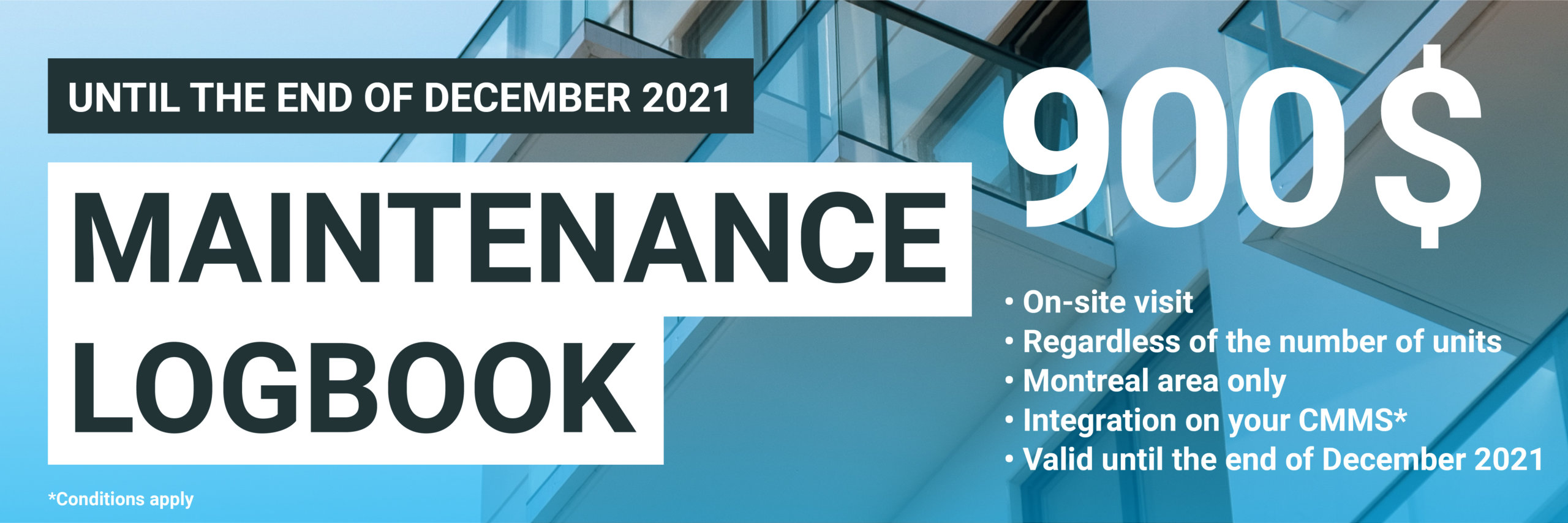Bill 16 and the maintenance logbook
Bill 16 was passed in December 2019 and became effective in January 2020. It stipulates that syndicates of co-ownership must now implement a maintenance log for managing their infrastructure maintenance activities. A maintenance log is used to guide and document maintenance and servicing activities to extend the facility’s life. It is divided into several sections, including:
- A directory of the different maintenance contracts and guarantees.
- A maintenance planning for future work.
- A list of procedures for maintaining the components.
A Living Thing
Remember that a maintenance program is a living thing: it continually evolves and must be kept up to date. The one mistake to avoid at all costs is to neglect the activity follow-ups identified in the log. Indeed, continuous monitoring allows for better control over your expenses and your performance.
Manage Your Expenses
With a maintenance log, you can compare maintenance expenditures by supplier or field crew against budgeted amounts. In case of a discrepancy, the log will help you trace the deficit cause and adjust the maintenance program accordingly by adjusting the frequency or the preventive maintenance/checkout tasks.
Manage Your Performance
You can use the maintenance log to monitor equipment performance closely and implement performance indicators (e.g. minimize the number of breakdowns, equipment restarts, or on-off cycling). Indicators are indices used to assess whether the use is optimized. And with good performance management, you can maximize the use of the equipment and helps prolongs its life.
Tools to Simplify
At first glance, it may seem challenging to stay on top of these follow-ups. This is why several tools exist to facilitate your planning. Have you selected your tool?
You have not yet implemented a CMMS tool (Computerized Maintenance Management System)
Suppose you do not yet have a collaborative platform (e.g. CMMS) that facilitates the follow-ups. In that case, it is essential to consider integrating this type of tool into your operations. The deployment of a CMMS must be done rigorously to be effective, and you should always consider the context and all your stakeholders’ needs. This is a project in itself, and CREO Solutions can help you realize it successfully.
You Already Have a CMMS Tool
We are aware of the importance of good data that feeds a collaborative platform. However, it would be best not to wait too long before importing all your planned tasks, inventories, and schedules into your management tool. This is why our services include the integration of your data into your management platform. This way, you can benefit from it as soon as possible.
Other Benefits to Consider
Rigorous monitoring facilitates knowledge transfer. In the context of syndicates of co-ownership, the building administrators may move suddenly, and manager turnover is often remarkably high. During these changes, operations knowledge and details are often compromised. Avoid this type of problem by using tools that simplify your management, like a CMMS, thus ensuring that you will not be harmed if a member decides to leave overnight.
CREO Solutions’ experts are passionate about effective management.
To help syndicates of co-ownership comply with the requirements of Bill 16, we offer this limited-time package.
Contactus using the form below to take advantage of this offer. We will get back to you within 24 hours.
Ce formulaire est actuellement fermé pour les enregistrements.


